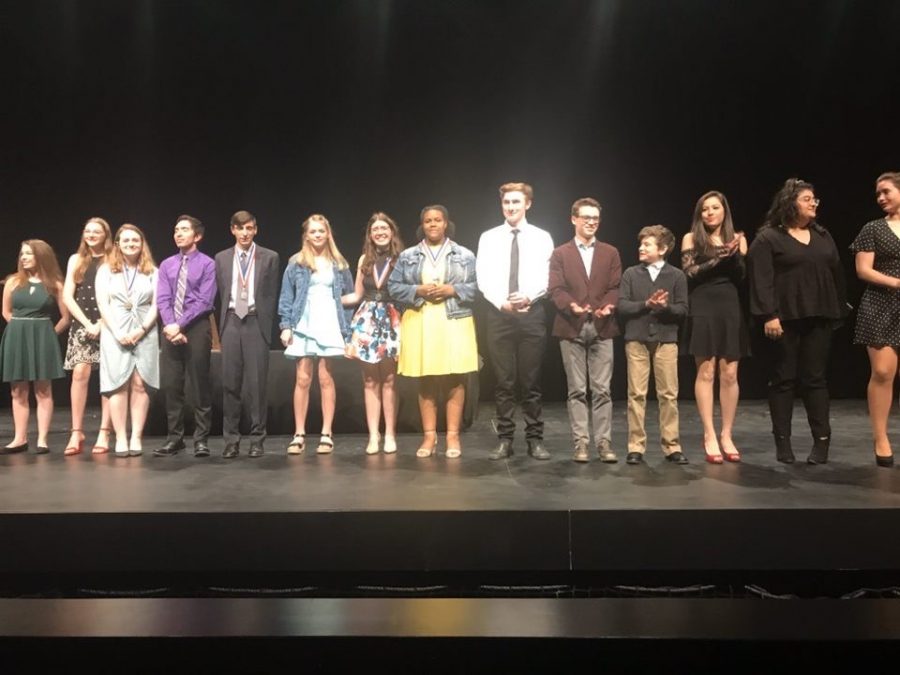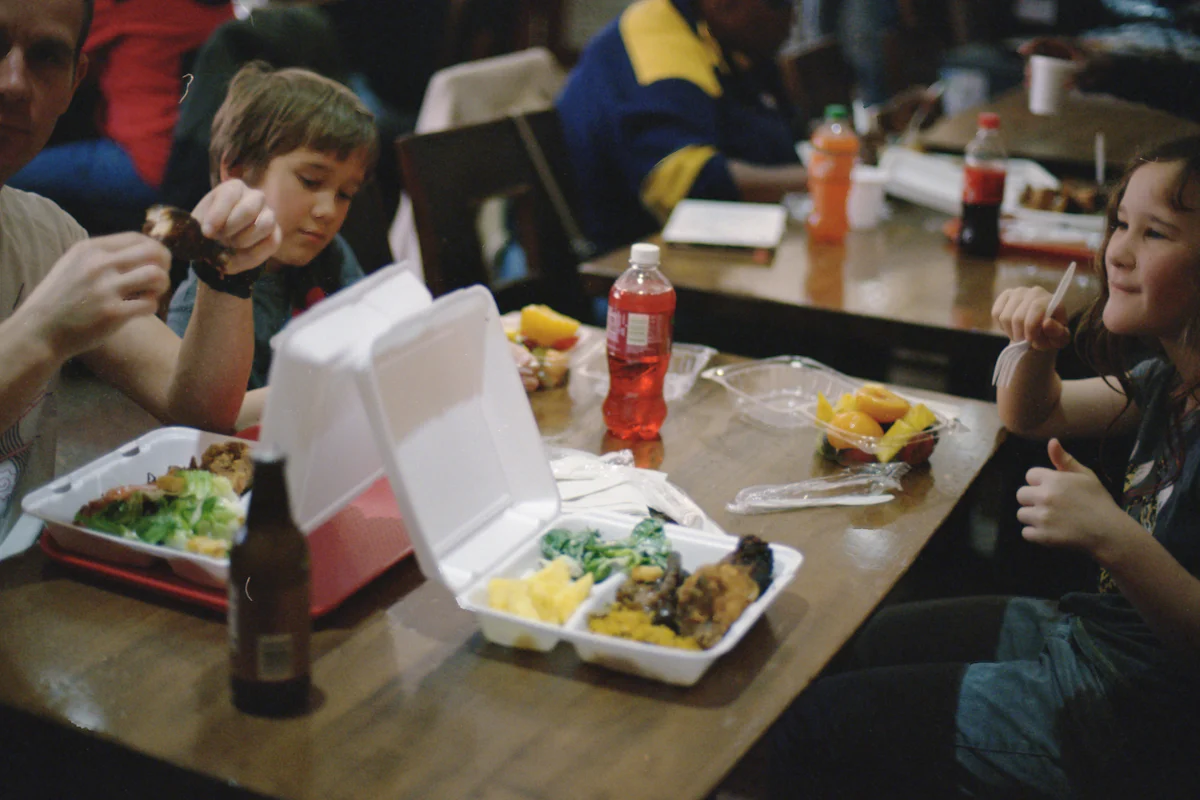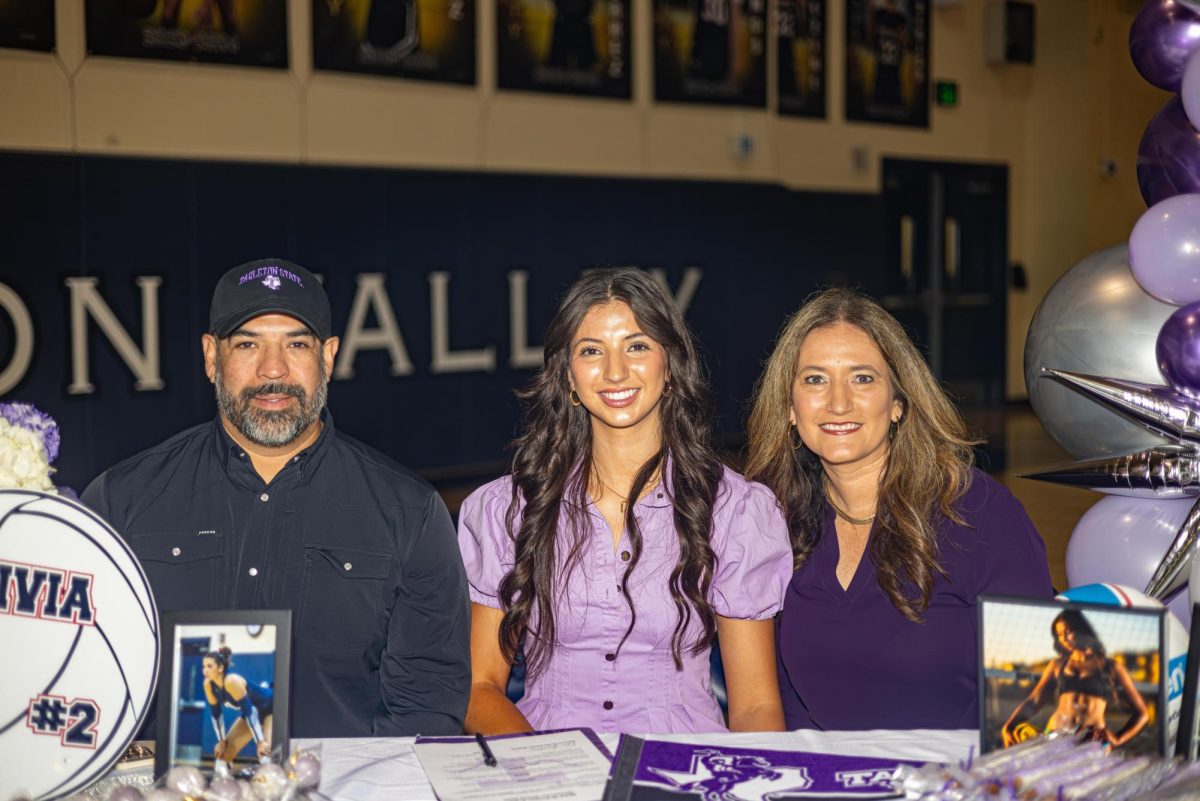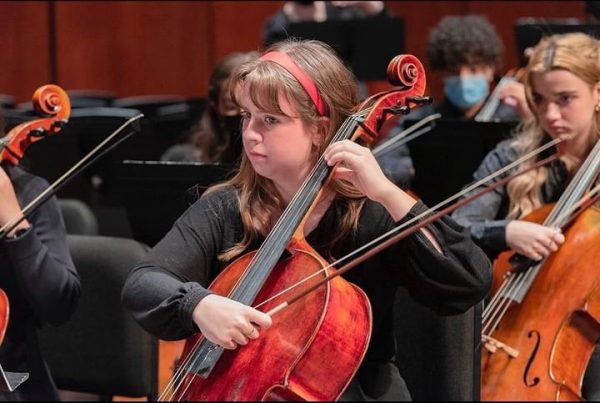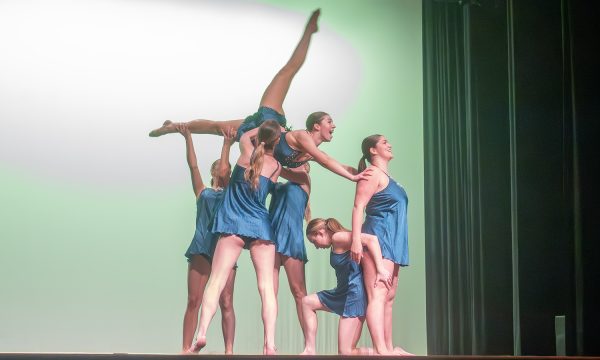Theatre knocks it out of the (Clybourne) park
Two-act show advances to District competition
As they stand on the stage, the Clybourne Park cast and crew accept their first place plaque at their most recent contest.
March 8, 2020
A quiet auditorium after a long day of performances. Five schools wait with anticipation. The contest manager is about to announce the schools who will advance to one-act district competition.
“Comal’s Smithson Valley!” The auditorium erupts with applause. The class lines up onstage to receive their 1st place plaque, smiling and congratulating each other. But before this moment could occur, more than three months of strenuous rehearsals took place.
After theatre director Casey O’Bryant bought the rights to Clybourne Park as production’s competitive show, senior Olivia Aliassadi was selected as stage manager.
Aliassadi, O’Bryant, and technical director James Black were a part of the audition process for this show, all compiling a list of the cast members with each role they would receive.
There ended up being eight actors, two techies, one costume designer, and nine ensemble members.
The ensemble of Clybourne Park is in charge of the transition from act one (set in 1959) to act two (set in 2009); their goal is to turn the set from a pristine family home to a run-down, abandoned house in under 60 seconds.
“The transition works if everyone does their jobs correctly and efficiently,” freshman Morgan Miller said. “It’s hard to communicate with others to get it how Mr. O wants it.”
Ensemble members spend hours rehearsing the transition, sometimes scrapping set pieces and completely starting over; they are constantly changing the choreography of it.
“In the new version of the transition, I flip a tarp over a bifold leaf, take off a table and chair, take out the spool, and bring in the chain link fence,” freshman Emma Derr said. “One of the biggest struggles is that everyone has a different opinion on how things should work in the most efficient way.”
The transition can create problems. If someone is absent, everyone scrambles to fill in.
“Ensemble is an important part in a play,” freshman Anthony Mossbrooks said. “If we are down one person, it can damage the show.”
Although the set is a crucial part of any production, it is there to compliment the main attraction: the acting.
“I play Betsy and Kathy in Clybourne Park,” senior Hannah Marfin said. “I differentiate my two characters by their time periods and their experiences in the two plays. Betsy stands by Karl’s side, oblivious to the weight of the issues being discussed as she cannot hear. Kathy, on the other hand, has a distinct desire to get her way and make sure that the house for Lindsey and Steve will be built.”
The cast sometimes struggles to develop their characters separately, but are overall confident in their ability to change personalities in a short amount of time.
“The hardest thing about switching characters mid-play is getting into the mindset and soul of who I [am] playing,” senior Blake Von Tilzer said. “My two characters, although having similar beliefs, are much different in the sense of how they frame what they believe. They both come from very different backgrounds and thus enter the scenes with different contexts.”
While the actors act and the ensemble works the transition, the crew implements lights and sound. Music from different eras is played during opening, closing, and the transition to show the passage of time, accompanied by blue lighting that contrasts the rest of the play.
“The lights and sound help add dimension,” senior Stephen Barkalow. “[It shows] there is an outside world to this one house that we look inside, and that even though our story does take place inside one house, life for everyone else on earth goes on outside the walls.”
Another element of a production that adds to the acting is the costumes. Sophomore Taralynn Gates was charged with the task of finding costume pieces from two different generations for the actors.
Each component of the play came together, but the class faced a sudden problem: two people left production earlier in the year, and the class was short of hands. O’Bryant then recruited two girls to join the class and be a part of the ensemble.
“So it’s actually kinda crazy,” junior Sophia Phelan said. “Mr. O had asked me about joining production, and I had been debating joining and quitting soccer. But [soccer] season started and I just stopped enjoying it. Production is definitely more my speed. I enjoy competing and this gives me that opportunity. It also surrounds me with people who have the same passion and care about a production.”
With the show progressing accordingly, theatre travelled to East Central to compete in Zone.
21 groggy cast members made their way to school at 6:15 a.m. feeling tired but ready for action. They walked up the bus steps and prepared for the next few hours to pass by in what felt like seconds.
They arrived at the school and unloaded their Penske truck full of set pieces. The sun was up, and hopes were high.
Before they performed Clybourne Park, they were required to do an official rehearsal. The class practiced setting up, spiked the stage, and ran a cue to cue of the tech.
Adrenaline started to course through each individual. It was around 10:15 a.m., and the students were feeling confident. They used the next few hours to eat lunch, run the show, and get into costume.
When they entered the auditorium to perform, the contest manager started a 7 minute timer for the cast to set up the stage. Everyone hurried to put their assigned set pieces into place. Relief flowed through the students when they completed setup without issue.
A few “break a legs” were whispered before the actors moved to their starting positions backstage. Anxious, excited, and slightly out of breath, they waited patiently for the curtain to open. As soon as it did, they were prepared to give it their all.
“For the first time ever, I wasn’t extremely nervous,” senior Caleb Mosley said. “After we finished our seemed to be impossible 7 minute setup so flawlessly, I knew we were ready. So throughout the whole show I just had so much fun.”
Once the lights went down and the curtain closed, the audience’s laughter and applause rang through their ears.
The cast and crew were thrilled with their performance, giddy with relief and pride.
Fast forward to 4:30 p.m: the crew spent nearly three more hours talking about the show, eating dinner, changing out of costume, and changing into formalwear for the awards ceremony. A few people went to watch two other schools’ shows.
People were eager to hear the results of the competition.
Once notified that the three judges have made their decision, O’Bryant led his students back to the auditorium for the ceremony.
The contest manager onstage reads out the names of students who won awards.
Smithson Valley won overall best tech.
Senior Gracen Farmer won a technical award.
Junior Brenna Collins and senior Caleb Mosley won honorable mention for all-star cast.
Freshman Chaya Powell, senior Hannah Marfin, and senior Blake Von Tilzer won all-star cast.
And finally, the number one advancing school went to Smithson Valley.
“It felt so wonderful to get first,” Marfin said. “It was a nice sense of validation that our hard work was paying off. It’s giving us more motivation to continue on and work even harder.”
Production theatre advanced to district, hopefully continuing the contest through bi-district, area, region, and state.
“There are so many things to be proud of when working on and competing shows,” Aliassadi said. “But one thing that I am so proud of is the way this company has been able to adapt to and conquer all of the changes and obstacles that are put in their way. It’s so amazing to see everyone work together and keep each other motivated through it all!”

